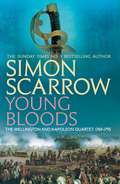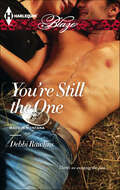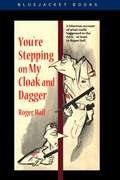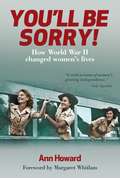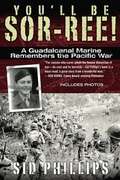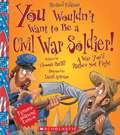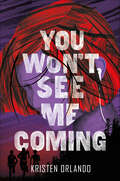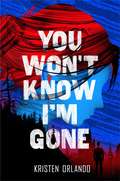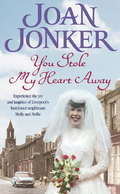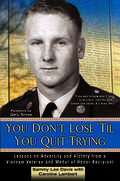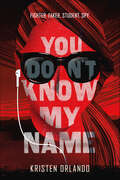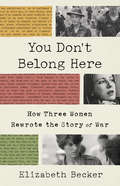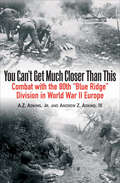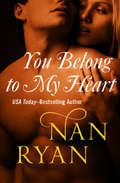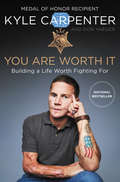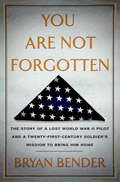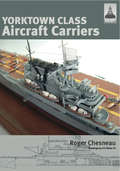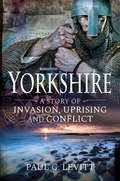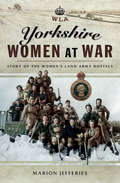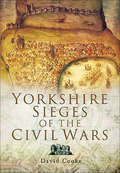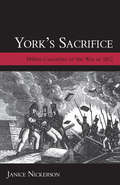- Table View
- List View
Young Bloods (Wellington and Napoleon 1)
by Simon ScarrowYOUNG BLOODS is the first gripping novel in Simon Scarrow's bestselling Wellington and Napoleon quartet. Perfect for fans of Robert Harris.Arthur Wesley (the future Duke of Wellington) was born and bred to be a leader. With a firm belief that the nation must be led by a king, the red-coated British officer heads for battle against the French Republic, to restore the fallen monarchy.Napoleon Bonaparte joins the French military on the eve of the Revolution. He believes leadership is won by merit, not by noble birth. When anarchy explodes in Paris he's thrust into the revolutionary army poised to march against Britain.As two mighty Empires embark on a bloody duel, Wesley and Bonaparte prepare to face a sworn enemy, unaware that the fate of Europe will one day lie in their hands...
Young Bloods (Wellington and Napoleon 1)
by Simon ScarrowYOUNG BLOODS is the first gripping novel in Simon Scarrow's bestselling Wellington and Napoleon quartet. Perfect for fans of Robert Harris.Arthur Wesley (the future Duke of Wellington) was born and bred to be a leader. With a firm belief that the nation must be led by a king, the red-coated British officer heads for battle against the French Republic, to restore the fallen monarchy.Napoleon Bonaparte joins the French military on the eve of the Revolution. He believes leadership is won by merit, not by noble birth. When anarchy explodes in Paris he's thrust into the revolutionary army poised to march against Britain.As two mighty Empires embark on a bloody duel, Wesley and Bonaparte prepare to face a sworn enemy, unaware that the fate of Europe will one day lie in their hands...
You're Still the One (Made in Montana)
by Debbi RawlinsHe’s the one she always wanted, but could never have...until nowToday is Rachel McAllister’s birthday. With her dreams indefinitely paused-she turned her family’s struggling ranch into the Sundance Dude Ranch-it’s not exactly the birthday of the century. But she’s about to receive one heck of a present....Matt Gunderson is back in town. The boy who broke her teenage heart into a gazillion pieces. And being a pro bull rider has definitely done something for his physique. Mmm.Their families have been silently at war for years. And with Matt on a break from the rodeo circuit, Rachel has only a few days to see if the chemistry is still sizzling. To finally taste the forbidden. To treat herself to what might be the best birthday present ever...over and over again!
You're Stepping on My Cloak and Dagger
by Roger HallWith a sharp eye and wry wit, Roger Hall recounts his experiences as an American Army officer assigned to the Office of Strategic Services (OSS) during World War II. First published in 1957 to critical and popular acclaim, his book has become a cult favorite in intelligence circles. The story follows Hall's experiences from a junior officer fleeing a tedious training assignment in Louisiana to his quirky and rigorous OSS training rituals in the United States, England, and Scotland. Quick to pick up on the skills necessary for behind-the-lines intelligence work, he became an expert instructor. But he was only reluctantly given operational duties because of his reputation as an iconoclast. In his droll story-telling style, Hall describes his first parachute jump in support of the French resistance as a comedy of errors that terminated prematurely. His last assignment in the war zone came when William Colby appointed him section head of an operations group that made its way on foot through Sweden. Called one of the funniest and most perceptive works ever written about life in the OSS, the book includes a wealth of unforgettable personalities that Hall encountered over the years.
You'll be Sorry: How World War II Changed Women's Lives
by Ann HowardHonouring grandmothers and mothers in a superb account of women&’s participation in the Services during World War II, and their ensuing battle for equal opportunity that set the foundation for the Women&’s Liberation Movement of the 70s.
You'll Be Sor-ree!: A Guadalcanal Marine Remembers the Pacific War (Playaway Adult Nonfiction Ser.)
by Sid PhillipsSid Phillips knew he was a long way from his home in Mobile, Alabama, when he plunged into the jungles of Guadalcanal in August 1942... A mortarman with H-2-1 of the legendary 1st Marine Division, Sid was only seventeen years old when he entered combat with the Japanese. Some two years later, when he returned home, the island fighting on Guadalcanal and Cape Gloucester had turned Sid into an "Old Timer" by Marine standards, and more: he left as a boy, but came home a man. These are his memoirs, the humble and candid tales that Sid collected during a Pacific odyssey spanning half the globe, from the grueling boot camp at Parris Island, to the coconut groves of Guadalcanal, to the romantic respite of Australia. In this true story, Sid recalls his encounters with icons like Chesty Puller, General Vandergrift, Eleanor Roosevelt, and his boyhood friend, Eugene Sledge. Here, he remembers the rain of steel from Japanese bombers and battleships, the brutality of the tropical elements, and the haunting notion of being expendable. This is the story of how Sid stood shoulder to shoulder with his Marine brothers to discover the inner strength and deep faith necessary to survive the dark, early days, of WWII in the Pacific.
You Wouldn't Want to Be a Civil War Soldier!: A War You'd Rather Not Fight (You Wouldn't Want To...)
by David Antram Thomas Ratliff<p>What are your chances of surviving America's bloodiest war? This interactive series will enthrall young and reluctant readers (Ages 8-12) by making them part of the story, inviting them to become the main character. Each book uses humorous illustrations to depict the sometimes dark and horrific side of life during important eras in history. <p>It's 1861. War has broken out between the United States and the Confederate States of America, and you have answered President Lincoln's call for volunteers to fight for the Union. This new extended edition includes a Civil War timeline, details of major battles, and fascinating information on the role of women in the Civil War.</p>
You Won't See Me Coming (The Black Angel Chronicles #3)
by Kristen OrlandoAfter finally taking down Torres, her mother’s merciless killer, Reagan and Luke have two targets on their backs and are forced into hiding. With new names, looks, and cover stories, they’re living quiet, “safe” lives, but revenge comes at a steep price. Reagan’s actions continue to haunt the pair and put the people they love in danger. When Reagan discovers her best friend Harper is on the verge of being kidnapped, she and Luke defy Black Angel orders and risk blowing their cover to save their friend. After the rescue attempt goes wrong, the three friends must go on the run with an army of assassins hot on their trail and the list of trust-worthy Black Angels getting smaller and smaller. Will they make it out alive? And at what cost? Fast-paced and suspenseful, this is the explosive finale of Kristen Orlando's Black Angel Chronicles series.
You Won't Know I'm Gone
by Kristen OrlandoGoing rogue in an effort to rescue her kidnapped parents has cost Reagan Hillis her automatic ticket to the Training Academy. But becoming a Black Angel is the only way Reagan will be able to exact revenge on her mother’s merciless killer, Santino Torres. When Reagan is given a chance to prove that she’s worthy of training to be a Black Angel, she also gets the first chance she’s ever had to be her true self. No aliases. No disguises.But when her friend Luke joins her at the Black Angels training compound, Reagan finds herself once again torn between the person she was and the person she wants to be. Reagan has to prove that she's as good as her parents trained her to be, because she’ll never find Torres without the Black Angels’ help.
You Stole My Heart Away: A warm and humorous saga of friendship and community (Molly and Nellie series, Book 9)
by Joan JonkerMolly and Nellie unite for the last time, in this heart-warming saga complete with hilarity, friendship and a perfect wedding. In You Stole My Heart Away, Joan Jonker brings us the final instalment of her hugely popular Molly and Nellie series, as the two friends get up to more mischief in their beloved Liverpool. Perfect for fans of Katie Flynn and Nadine Dorries.Molly Bennett and Nellie McDonough are very happy with their lot in life. Their expanding families and abundance of friends always keep them busy. And as they walk arm in arm to the shops every day they are greeted with warmth by their neighbours, for wherever they go they bring fun and laughter with them. Their rock-solid friendship has lasted over twenty years, through good times and bad, and never once have Molly and Nellie fallen out. The two best mates love a bit of excitement so when they learn there is a wedding in the offing which will bring the Bennett, McDonough and Corkhill families even closer it gives the intrepid pair a good reason to save up for a visit into Liverpool and to the shop selling wedding hats. As Nellie says to Corker: 'It had better be a posh wedding to match me posh new hat.' What readers are saying about You Stole My Heart Away: 'This book was fantastic. I laughed all the way through - walked round the house with a smile on my face. Well done Joan''Great book, just what I wanted, a real story to read over and over again'
You Don't Lose 'Til You Quit Trying: Lessons on Adversity and Victory from a Vietnam Veteran and Medal of Honor Recipient
by Caroline Lambert Gary Sinise Sammy Lee DavisThe inspiring true life story of Vietnam veteran, Medal of Honor recipient and veteran's advocate Sammy Lee Davis. On November 18th, 1967, Private First Class Davis's artillery unit was hit by a massive enemy offensive. At twenty-one years old, he resolved to face the onslaught and prepared to die. Soon he would have a perforated kidney, crushed ribs, a broken vertebra, his flesh ripped by beehive darts, a bullet in his thigh, and burns all over his body. Ignoring his injuries, he manned a two-ton Howitzer by himself, crossed a canal under heavy fire to rescue three wounded American soldiers, and kept fighting until the enemy retreated. His heroism that day earned him a Congressional Medal of Honor--the ceremony footage of which ended up being used in the movie Forrest Gump. You Don't Lose 'Til You Quit Trying chronicles how his childhood in the American Heartland prepared him for the worst night of his life--and how that night set off a lifetime battling against debilitating injuries, the effects of Agent Orange and an America that was turning on its veterans. But he also battled for his fellow veterans, speaking on their behalf for forty years to help heal the wounds and memorialize the brotherhood that war could forge. Here, readers will learn of Sammy Davis's extraordinary life--the courage, the pain, and the triumph.
You Don't Know My Name (The Black Angel Chronicles)
by Kristen OrlandoFighter, faker, student, spy: heart-pounding action and spine-tingling suspense intertwine in an electrifying debut for fans of emotional thrillers with just the right dash of high school drama.Seventeen-year-old Reagan Elizabeth Hillis is used to changing identities overnight, lying to every friend she’s ever had, and pushing away anyone who gets too close. Trained in mortal combat and weaponry her entire life, Reagan is expected to follow in her parents’ footsteps and join the ranks of the most powerful top-secret agency in the world, the Black Angels. Falling in love with the boy next door was never part of the plan.Now Reagan must decide: Will she use her incredible talents and lead the dangerous life she was born into, or throw it all away to follow her heart and embrace the normal life she's always wanted? And does she even have a choice?Find out if you are ready to join the Black Angels in debut author Kristen Orlando’s You Don't Know My Name, the captivating and emotional first book in the Black Angel Chronicles, chosen by readers like you for Macmillan's young adult imprint Swoon Reads.Praise for You Don't Know My Name:"This is my ideal sort of book, full of tension, action, romance, family issues, and a girl struggling to figure out her identity!" —Sara Shepard, #1 New York Times Best Selling author of The Pretty Little Liars series "This one’s a page-turner." —Booklist"A solid addition to high school collections, especially those with patrons who love stories of spy craft and secret identities, with a splash of romance" —School Library Journal
You Don't Belong Here: How Three Women Rewrote the Story of War
by Elizabeth BeckerThe long-buried story of three extraordinary female journalists who permanently shattered the barriers to women covering war. Kate Webb, an Australian iconoclast, Catherine Leroy, a French daredevil photographer, and Frances FitzGerald, a blue-blood American intellectual, arrived in Vietnam with starkly different life experiences but one shared purpose: to report on the most consequential story of the decade. At a time when women were considered unfit to be foreign reporters, Frankie, Catherine, and Kate challenged the rules imposed on them by the military, ignored the belittlement of their male peers, and ultimately altered the craft of war reportage for generations. In You Don&’t Belong Here, Elizabeth Becker uses these women&’s work and lives to illuminate the Vietnam War from the 1965 American buildup, the expansion into Cambodia, and the American defeat and its aftermath. Arriving herself in the last years of the war, Becker writes as a historian and a witness of the times. What emerges is an unforgettable story of three journalists forging their place in a land of men, often at great personal sacrifice. Deeply reported and filled with personal letters, interviews, and profound insight, You Don&’t Belong Here fills a void in the history of women and of war.
You Can't Get Much Closer Than This: Combat With the 80th "Blue Ridge" Division in World War II Europe
by A.Z. Adkins Jr. Andrew Z. Adkins IIIA young soldier’s memoirs of fighting in WWII: “Fascinating . . . A personal record like this is a valuable resource to anyone interested in the period”(Military Model Scene).After the Citadel and Officer Candidate School, Andrew Z. Adkins Jr., was sent to the 80th Infantry Division, then training in the California-Arizona desert. There, he was assigned as an 81mm mortar section leader in Company H, 2nd Battalion, 317th Infantry Regiment.When the division completed training in December 1943, it was shipped in stages to the United Kingdom and then Normandy, where it landed on August 3, 1944. Lieutenant Adkins and his fellow soldiers took part in light hedgerow fighting that served to shake the division down and familiarize the troops and their officers with combat. The first real test came within weeks, when the 2nd Battalion, 317th Infantry, attacked high ground near Argentan during the drive to seal German forces in the Falaise Pocket. While scouting for mortar positions in the woods, Adkins met a group of Germans and shot one of them dead with his carbine. This baptism in blood settled the question faced by every novice combatant: He was cool under fire, capable of killing when facing the enemy. He later wrote, “It was a sickening sight, but having been caught up in the heat of battle, I didn’t have a reaction other than feeling I had saved my own life.”Thereafter, the 2nd Battalion, 317th Infantry, took part in bloody battles across France, sometimes coping with inept leadership and grievous losses, even as it took hills and towns away from the Germans. In the fighting graphically portrayed here, Adkins acted with skill and courage, placing himself at the forefront of the action whenever he could. His extremely aggressive delivery of critical supplies to a cut-off unit in an embattled French town earned him a Bronze Star, the first in his battalion.This is a story of a young soldier at war, a junior officer’s coming of age amid pulse-pounding combat. Before his death, Andy Adkins was able to face his memory of war as bravely as he faced war itself. He put it on paper, honest and unflinching. In 1944-45, he did his duty to his men and country—and here, he serves new generations of military and civilian readers.
You Belong to My Heart
by Nan RyanIn Civil War–era Tennessee, a southern belle battles a cold-hearted, hot-blooded Union soldier in this romance from a USA Today–bestselling author. She was a pampered blue blood from a powerful southern family. He was the son of a seamstress from the mud flats south of Memphis. They were born to be enemies, but Mary Ellen Preble fell in love with Clayton Knight. On her sixteenth birthday, they consummated their passion in a night neither would ever forget. But their romantic idyll was short lived. Torn from each other by a man&’s vicious lies, Clay left Tennessee and Mary Ellen married a man she didn&’t love. Now, as the Civil War rages, the suddenly single Tennessee belle is about to be reunited with the man she once adored because Longwood, Mary Ellen&’s beloved ancestral mansion, has just been seized and turned into Union headquarters. And the man leading the attack is Captain Clayton Knight, who wants her back in his bed . . . but never in his heart. Forbidden desire reaches dazzling new heights in this poignant and passionate tale of deception, war, and star-crossed love.
You Are Worth It: Building a Life Worth Fighting For
by Don Yaeger Kyle CarpenterThe youngest living Medal of Honor recipient delivers an unforgettable memoir that "will inspire every reader” (Jim Mattis)On November 21, 2010, U.S. Marine Lance Corporal Kyle Carpenter was posted atop a building in violent Helmand Province, Afghanistan, when an enemy grenade skittered toward Kyle and fellow Marine Nick Eufrazio. Without hesitation, Kyle chose a path of selfless heroism that few can imagine. He jumped on the grenade, saving Nick but sacrificing himself. One of the year’s most anticipated books, Kyle’s remarkable memoir reveals a central truth that will inspire every reader: Life is worth everything we’ve got. It is the story of how one man became a so-called hero who willingly laid down his life for his brother-in-arms—and equally, it is a story of rebirth, of how Kyle battled back from the gravest challenge to forge a life of joyful purpose.Kyle Carpenter’s heart flatlined three times while being evacuated off the battlefield in Afghanistan. Yet his spirit was unbroken. Severely wounded from head to toe, Kyle lost his right eye as well as most of his jaw. It would take dozens of surgeries and almost three years in and out of the hospital to reconstruct his body. From there, he began the process of rebuilding his life. What he has accomplished in the last nine years is extraordinary: he’s come back a stronger, better, wiser person.In 2014, Kyle was awarded the nation’s highest military decoration, the Medal of Honor, for his “singular act of courage” on that rooftop in Afghanistan, an action which had been reviewed exhaustively by the military. Kyle became the youngest living recipient of the award–and only the second living Marine so honored since Vietnam.You Are Worth It is a memoir about the war in Afghanistan and Kyle’s heroics, and it is also a manual for living. Organized around the credos that have guided Kyle’s life (from “Don’t Hide Your Scars” to “Call Your Mom”), the book encourages us to become our best selves in the time we’ve been given on earth. Above all, it’s about finding purpose, regardless of the hurdles that may block our way.Moving and unforgettable, You Are Worth It is an astonishing memoir from one of our most extraordinary young leaders.
You Are Not Forgotten
by Bryan BenderAn inspiring and epic tale of loss and redemption about two American servicemen: a Marine Corps pilot who was shot down in WWII and the modern-day soldier determined to bring home his remains six decades later Major George Eyster V comes from a long line of military officers, dating back to the Revolutionary War. Army service was George's family legacy, but his tour of duty in Iraq left him disillusioned and questioning. He was making plans to end his army career but was offered a posting to J-PAC, an elite division armed with the latest detection and forensic technology. J-PAC's sole mission is to fulfill a solemn promise at the heart of the military code: bring all fallen soldiers home to the country for which they gave their lives. In 1944 Captain Ryan McCown, a dashing young Marine aviator assigned to the USS Nassau, was shot down over the jungles of Papua, New Guinea. McCown's diaries and letters home to his family and fiancée provide a moving, powerful portrait of the fears and costs of a very different war and underscore the pathos of the ultimate cost of duty. Eyster's mission with J-PAC eventually took him and his team deep into the sweltering interior of New Guinea in search of McCown's remains. It would be a fraught mission, complete with tropical diseases and black magic, at the end of which Eyster would not only repatriate a fallen veteran and fulfill a promise to deliver him to his loved ones but would also uncover something lost in himself-a sense of purpose in a promise between soldiers that is still worth fighting for.
You Are My Sunshine: A heartwarming wartime story of friendship and love
by Rosie Archer1944, the darkest days of the war.Trixie and Vi are back in Gosport and doing their bit to help Britain win the war. Felling trees is backbreaking, but at least they know they're doing vital work.Trixie has a new boyfriend, Eddie. He's charming, handsome, and always flush with cash - a real Gosport catch, though Vi isn't so sure. Something about Eddie doesn't seem quite right, and Vi will do anything to convince Trixie that she's making a mistake with this relationship.Though Trixie loves Eddie, she finds it hard to forget Cy, the man she fell in love with at the start of the War, who was declared missing in action. As the bombs fall on Gosport both girls have big decisions to make. Will their friendship carry them through the hardest days?******************************What readers are saying about Rosie Archer'An amazing read' 5* Reader Review'Kept me hooked from the beginning' 5* Reader Review'Great characterisation' 5* Reader Review'A wonderful storyteller' 5* Reader Review'Heart-warming' 5* Reader Review
You Are My Sunshine: A heartwarming wartime story of friendship and love
by Rosie Archer1944, the darkest days of the war.Trixie and Vi are back in Gosport and doing their bit to help Britain win the war. Felling trees is backbreaking, but at least they know they're doing vital work.Trixie has a new boyfriend, Eddie. He's charming, handsome, and always flush with cash - a real Gosport catch, though Vi isn't so sure. Something about Eddie doesn't seem quite right, and Vi will do anything to convince Trixie that she's making a mistake with this relationship.Though Trixie loves Eddie, she finds it hard to forget Cy, the man she fell in love with at the start of the War, who was declared missing in action. As the bombs fall on Gosport both girls have big decisions to make. Will their friendship carry them through the hardest days?******************************What readers are saying about Rosie Archer'An amazing read' 5* Reader Review'Kept me hooked from the beginning' 5* Reader Review'Great characterisation' 5* Reader Review'A wonderful storyteller' 5* Reader Review'Heart-warming' 5* Reader Review
You Are My Sunshine
by Rosie Archer1944, the darkest days of the war.Trixie and Vi are back in Gosport and doing their bit to help Britain win the war. Felling trees is backbreaking, but at least they know they're doing vital work.Trixie has a new boyfriend, Eddie. He's charming, handsome, and always flush with cash - a real Gosport catch, though Vi isn't so sure. Something about Eddie doesn't seem quite right, and Vi will do anything to convince Trixie that she's making a mistake with this relationship.Though Trixie loves Eddie, she finds it hard to forget Cy, the man she fell in love with at the start of the War, who was declared missing in action. As the bombs fall on Gosport both girls have big decisions to make. Will their friendship carry them through the hardest days?******************************What readers are saying about Rosie Archer'An amazing read' 5* Reader Review'Kept me hooked from the beginning' 5* Reader Review'Great characterisation' 5* Reader Review'A wonderful storyteller' 5* Reader Review'Heart-warming' 5* Reader Review
Yorktown Class Aircraft Carriers (ShipCraft #3)
by Roger ChesneauThis fully illustrated guide offers historical context and step-by-step instruction for building and modifying US aircraft carrier models. This volume in the ShipCraft series covers the Yorktown class of American aircraft carriers. These legendary ships kept the Japanese at bay through World War II, in the dark days between Pearl Harbor and the Battle of Midway, where the USS Yorktown herself was lost. The USS Hornet launched the famous Doolittle Raid on Japan before being sunk at Santa Cruz in October 1942, but the USS Enterprise survived the fierce fighting of the early war years to become the US Navy's most decorated ship. This lavishly illustrated guide takes readers through a brief history of the development and careers of the Yorktown class. With its unparalleled level of visual information—including paint schemes, line drawings and photographs—it is simply the best reference for any modelmaker setting out to build one of these famous carriers.
Yorkshire: A Story of Invasion, Uprising and Conflict
by Paul C. LevittCelts, Romans, Saxons, Vikings . . . A sweeping history of this part of Northern England, and the many who have inhabited—and invaded—it over the centuries. This is a story about Yorkshire and its people, from the earliest period up to recent times. Foremost it is a story about invasion. Archaeological finds have shown that Yorkshire was occupied at a time when early hunters from continental Europe were not supposed to have ventured so far north. Growing populations on the European mainland made Yorkshire&’s fertile land and receding woodland a prime landscape for these first European farmers, and over time they would be followed by waves of invaders intent on pillage and land grabbing. From the north and west came the Picts and the Scots, while the Romans, Angles and Vikings arrived via the River Humber. The Normans would be the last to invade and seek to dominate everything they saw. Each invasion would leave its stamp on Yorkshire&’s culture and life, while battles would later be fought on Yorkshire soil during both the Wars of the Roses and the English Civil Wars. More than just a romp through the ages, this book reveals the key places where battles were fought and Yorkshire history was made.
Yorkshire Women at War: Story of the Women's Land Army Hostels
by Marion JefferiesIn Yorkshire, 2015 marks the centenary of the founding of the first Land Girl Hostel, near Boroughbridge, by Lady Margery Lawson Tancred. Yorkshire Women at War deals with the Women's Land Army Hostel policy during the First World War and it is the first exhaustive account to examine hostel life in the austerity of war and post-war Yorkshire between 1939-50.Marion Jefferies's account of over fifty Women's Land Army hostels is filled with quirky stories about the hectic lives of tired, noisy and hungry girls. There are tales of how the girls slept, ate and socialized in shared dormitories. It records how one old farmhouse had only a single oil lamp, which lit the dormitory; how candles were stuck to the bunk beds and the girls were forced to complain about wax spilling on to their clothes and bedding; and how, at Stockton, bats flew freely in the the girls' dormitories.Some wardens were domineering, neglectful, spiteful and inefficient. One warden was bitter towards her charges and even boxed a girl's ears. However, several other wardens were homely, kind and a real friend to the young girls, and they were remembered with great affection.Included in the book are Miss Jacob Smith's inspection reports of hostel life, which illustrate the real trials, worries and happiness of the girls, some only 16 or 17 years old and away from home for the first time.This is a serious, well-researched history of the Women's Land Army Hostels in Yorkshire and thanks to the excellent memories and joviality of many veterans contacted by the author, it has been illumined by numerous light-hearted moments of what was to them 'the great adventure of their lives'.
Yorkshire Sieges of the Civil Wars
by David CookeThroughout recorded history Yorkshire has been a setting for warfare of all kinds - marches, skirmishes and raids, pitched battles and sieges. And it is the sieges of the Civil War period - which often receive less attention than other forms of combat - that are the focus of David Cooke's new history. Hull, York, Pontefract, Knaresborough, Sandal, Scarborough, Helmsley, Bolton, Skipton - all witnessed notable sieges during the bloody uncertain years of the Civil Wars. His vivid reconstructions allow the reader to visit the castles and towns where sieges took place and stand on the ground where blood was spilt for the cause for king or Parliament. Using contemporary accounts and a wealth of maps and illustrations, his book allows the reader to follow the course of each siege and sets each operation in the context of the Civil Wars in the North.
York's Sacrifice: Militia Casualties of the War of 1812
by Janice NickersonNot only professional soldiers but also citizens serving as militiamen participated in the War of 1812. The militia’s contribution to the War of 1812 is not well understood. Even now, 200 years later, we don’t know how many Upper Canadian militia men died defending their home.York’s Sacrifice profiles 39 men who lost their lives during the war. They include 19 residents of the Town of York, five residents of York County, and 11 residents of Halton, Peel, and Wentworth Counties. Where possible, biographies include information about each man’s origin, residence, occupation, civic life, family, militia service, and circumstances of death. A section on records provides detailed guidance in finding and using records from the period to trace an ancestors militia service and life in this difficult time period.A complete list of men who served in the three York regiments during the war identifies those who were killed, injured, captured, or deserted.
